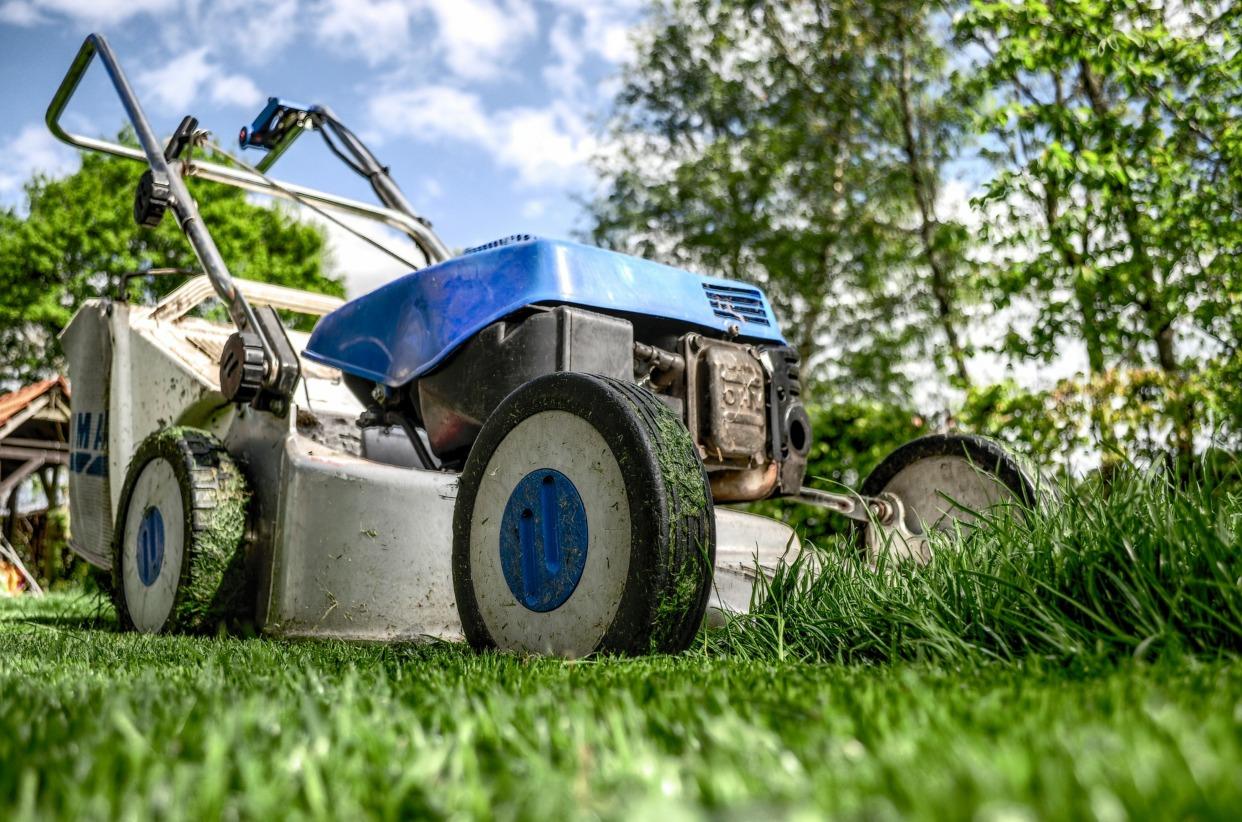
5 minute read
A Practical Guide for a Healthy, Robust Lawn
from DIGS 2024
by fernfriend
A Practical Guide for a Healthy Robust Lawn
By Ryan Ennis
MANY PERKS COME WITH A HEALTHY LAWN.
Unlike landscapes filled with dirt or stones, green spaces can cool the surroundings when large sections of grass absorb excessive heat from the sun and change it into the energy they need to live. Serving as a natural air purifier, expansive lawns will capture dust and other impurities you do not want to inhale. Lawns also help to reduce noise pollution caused by local traffic and trains, ultimately improving your quality of life.
Despite all these advantages, you may feel overwhelmed with the amount of work involved in maintaining a lawn. You may spend hours each week on the lawn, yet the results do not match your efforts when the lawn fails to flourish. It could be a matter of not how many hours you labor, but simply of how you perform the tasks. For better results, follow proven-effective lawn care methods. With the right nurturing, the yard will become the lush green carpet you have been striving for.
ADJUST THE MOWER. The cutting height of your lawn mower should be raised or lowered to accommodate the conditions of the season. In early spring, it is advisable to cut the lawn at a lower height, which eliminates brown grass and allows sunlight and rainwater to penetrate the soil. As spring turns into summer, raise the height so that the lawn can withstand drier and hotter temperatures. When fall arrives, lower the blade slightly to mulch leaves and other debris covering the lawn.
MAINTAIN THE MOWER. Another good practice is to keep the lawn mower blade sharp and balanced. If the blade’s edges are too dull, it will tear and rip at the grass. A sharp blade slices the top of the lawn cleanly and evenly. When improperly cut, the lawn will turn yellowish and become susceptible to disease, ultimately crying out for many fertilizing treatments and a great deal of water to revive it. An additional problem with an unbalanced and dull blade is that it can wreck the lawn mower’s bearings. To encourage the lawn’s healthy growth, the blade should be cleaned and sharpened one to two times per year. If the ground is bumpy or rough, then it would be best to tune up the mower and re-sharpen the blade more often.
BREAK OUT THE SPRINKLERS. That means giving the grass a couple of deep soakings each week. Spotty watering practices manage only to wet the tips of the grass, causing the lawn to develop shallow roots. Intense soakings will hydrate the lawn deeply enough to help the roots grow fully and strongly. When the lawn has a deep root structure, it can draw in moisture from the subsurface and stay hydrated longer.
The number of weekly soakings will depend on the types of soil in the yard. The sandier the soil, the more often you will need to irrigate the lawn. If clay exists in the ground, it may need less scheduled waterings. It is also recommended to activate the sprinklers in the early morning: the water pressure is high at this time of day, and the least amount of moisture will be lost to evaporation.
Springtime is the right time. Another important point is that along with regular waterings, you also should also give the LAWN ECO-FRIENDLY FERTILIZER TREATMENTS. Fertilizers can be laid down as early as the end of March or beginning of April. They encourage the development of the lawn’s root system. Directions on how to use the fertilizers are included with the packages. Read them carefully. Some work best by dampening the lawn after their applications. Make sure to comply with the necessary recommendations — wearing masks, gloves, and eye protection — when handling these products to protect your eyes, skin, and lungs.
Early April is also a good occasion to REMOVE CERTAIN NOXIOUS (DAMAGING OR UNPLEASANT) WEEDS, such as quackgrass and bindweed. Once these weeds take hold, they weaken a lawn’s overall structure. If you see dandelions, however, think twice about getting rid of them. Dandelions actually fertilize the grass. Remember that the thicker and healthier the lawn is, the more likely it will block the sun from reaching the seeds of invasive weeds and the spores of harmful fungi trying to germinate in the ground.
Like you, a lawn needs to breathe. To ensure that rainwater, fertilizers, and other elements will enrich the soil, AERATE THE LAWN EACH YEAR, preferably in the spring. Aeration involves pulling out small plugs of soil (done by a rentable machine called an aerator) so that oxygen and other precious nutrients can make it to the lawn’s roots. Consisting of dirt and thatch, the plugs will break down and disappear quickly, so no cleanup is required. Aerating the soil gives the lawn’s roots the necessary room to grow, and keeps the ground from becoming compacted when the weather turns hot and dry. Weed prevention treatments are usually more effective after a lawn has been aerated.
By heeding these tips, you will have more time for doing the things you enjoy during the summer. You should spend the summer months relaxing in a reclining lawn chair or on a hammock—or hosting barbecues or yard games. You should not have to waste endless hours trying to sustain a healthy lawn.













